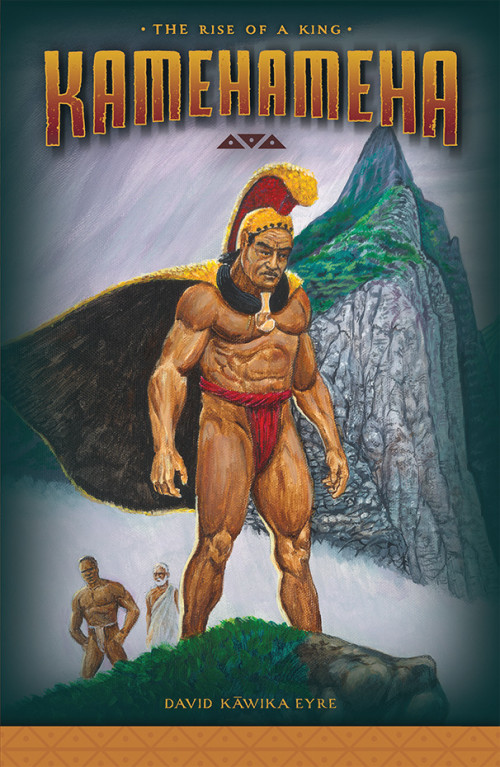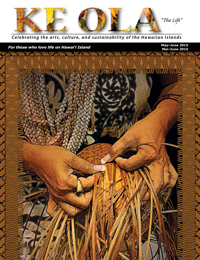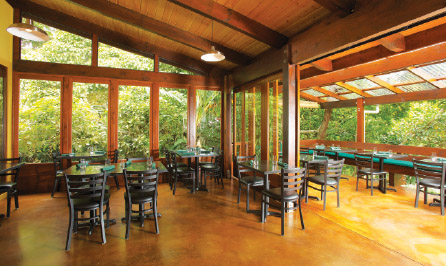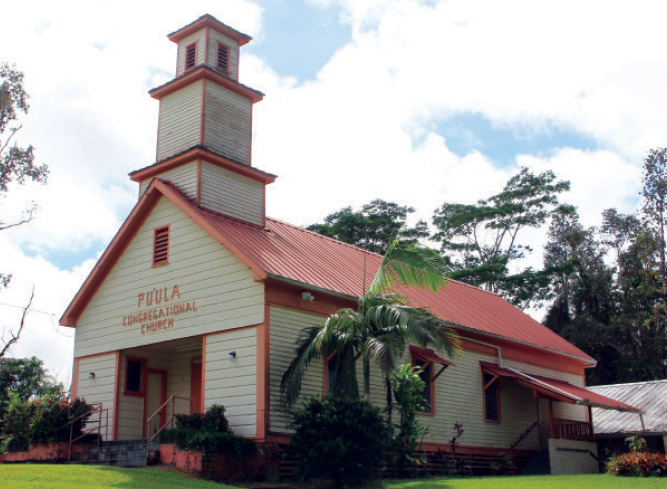
Ka Puana–The Refrain: Kamehameha: The Rise of a King
 By David Kāwika Eyre
By David Kāwika Eyre
Like Kaha‘i, Kamehameha would grow the land. Slowly, the life of the land would return. Slowly, for too many people had died. There were not enough kānaka left for the heavy work.
It was later that year that Kamehameha married the sacred chiefess Keōpūolani. Of Kamehameha’s many wives, Ka‘ahumanu was his beloved, and Keōpūolani his most sacred. Keōpūolani was of the Pi‘ilani line of Maui. She would bear Kamehameha children of the highest rank, which was the ni‘aupi‘o kapu of their mother.
When Keōpūolani was rounded with their first child, Kamehameha gave her the sacred sash of Liloa. He was given the feathered sash at Pu‘ukohola when he became ruling chief of Hawai‘i Island. Now, because of Keōpūolani’s higher kapu, the sash would be hers. When their first child, Liholiho, was born, he was placed under the care of Kamehameha and Ka‘ahumanu.
At the age of five, Liholiho was proclaimed heir to the kingdom by Kamehameha. The boy’s education in the world of men began.

They moved to Kona on the Island of Hawai‘i and lived at Kamakahonu, land of the ‘Eka wind, the smooth sea, and heaped fish. Kamehameha taught his son to fish aku. “These are days of rain,” Kamehameha would explain to Liholiho. “The lehua bloom in the sea.”
They paddled to where the terns circled and screeched. They let out their lines, out and out. An aku took the hook in its hard mouth. The father helped the son pull the bulky, jerking fish into the canoe. “This is the first fish,” Kamehameha said. “It is kapu for Ku‘ula and our ‘aumākua.”
Back on shore, they went to the shrine.
Kamehameha taught Liholiho to plant coconuts and trap eels, to grow kalo and to pound poi. Liholiho would watch and listen, then do, and say very little. Kamehameha would put his hand on his son’s shoulder. That was praise enough.
It was during this time that Pele grew jealous of Kana‘iaupuni and threatened to destroy the lands along the Kona coast that he so loved. Pele had earlier helped Kamehameha against the Ka‘ū chief Keōua. But now, the seers said, Pele felt ignored and forgotten.
And so the rock-eating woman, she who craves ‘opihi and snores in the rocks, sent her fiery lava to destroy the bay at Kīholo, a place famous for its quiet beauty. A place much beloved of Kamehameha.
Streams of red and black rock smoldered and smoked seaward from Hualālai, the long-slumbering volcano. Kamehameha understood the signs. “I must appease Pele or face her fury!” he told Liholiho as they set out for Kīholo.
The day darkened. The ali‘i nui, with his son and several chiefs, made their way along the rugged coast, makai of where the lava was eating. Near the place of ‘opihi, the lava rumbled and the fiery rock blazed at their skin. Smoke made their eyes burn and drip. Kamehameha felt the drag of Liholiho’s hand. “Have courage, my son. There is always fear. Without fear there can be no courage. Without courage there can be no great deeds.”
Kamehameha threw black boar, black ‘awa, and black niu on the red rock. Nothing happened. He drew in his breath and shouted at the glowing lava. “Pele! Eia au! I am Kamehameha!” The red lava blazed back at him. He gathered his hair in the clasp of his fist. With a slice of his dagger, he cut off a handful of hair and held it “Here, Pele! This is my offering for you!” He flung hair onto the smoldering lava. It burst into crackling flame.
The lava slowed. Out of the flame and smoke appeared a line of dancers. Pele herself was leading the figures across the lava, chanting her fiery pleasure, her black hair and red kapa streaming behind.
She turned her head and glared at Kamehameha. Her dance slowed. As one, the dancers leaned and lowered their heads. They stamped forward, stamped back, elbows bent, knees bent. Each foot kicked to the opposite ankle. They thrust their pointed fingers downward and stamped again.
Pele moved toward Liholiho, her eyes a blaze of heat. The boy edged close to his father. With a sharp jerk of her head, Pele stamped her foot and turned away. The lava stopped.
Kamehameha wiped the sweat off his face with his arm. He watched her. Finally he found words. “Pele, I will never ignore you again. It is my sacred vow to you: Pau Pele, pau manō!”
And so the beautiful bay of Kīholo was spared. Liholiho looked up at his father and said, “It is a lesson of my youth that I will never forget!”
Contact author David Kāwika Eyre: kawikspau@gmail.com.
Kamehameha: The Rise of a King is available from the author and local bookstores.
This excerpt is from Volcano resident David Kāwika Eyreʻs book which is a work of historical fiction based on Hawaiian sources and years of research. Used with permission.


